Terrariums have gained popularity for their captivating beauty and low maintenance. Let’s explore what terrariums are and discover some unique and beautiful types.
1 What is a Terrarium?
A terrarium is a miniature ecosystem that mimics a natural environment, including elements such as soil, water, air, gravel, plants, and even small animals. In simpler terms, it can be understood as “plants in a glass container.”
 Terrariums are miniature ecosystems enclosed in glass containers.
Terrariums are miniature ecosystems enclosed in glass containers.
Terrariums are typically housed in glass vessels of various shapes and sizes, and they can be open or closed systems. They are commonly used for decoration, exhibition, or even scientific studies on living environments.
2 Types of Terrariums
Open Terrariums
Open terrariums, also known as Open Terrariums, are ecosystems that are not closed off from their surroundings. This type is popular among beginners as it offers a diverse range of environments and plant species. However, open terrariums are not suitable for housing animals as they can easily escape.
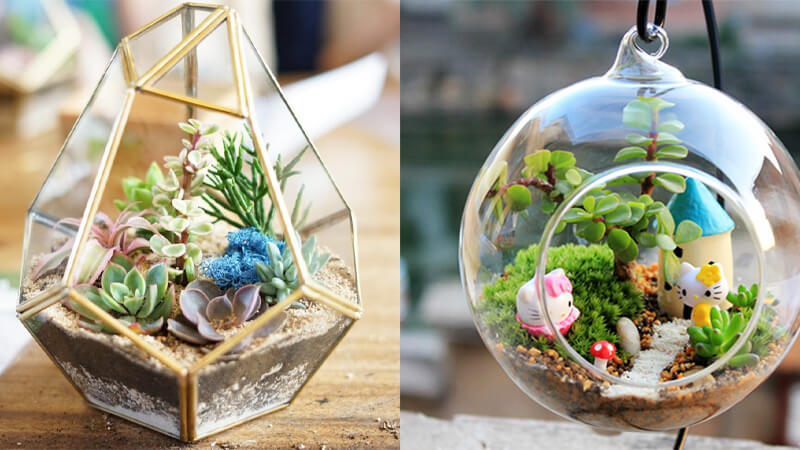 Open Terrarium
Open Terrarium
Caring for an open terrarium involves maintaining appropriate levels of nutrition, humidity, light, temperature, and ventilation to ensure the healthy growth of the plants. Additionally, careful selection of compatible plant species is essential to prevent issues like waterlogging or drought, which can lead to plant death.
Closed Terrariums
In contrast to open terrariums, closed terrariums (Closed Terrariums) are almost entirely self-sufficient ecosystems providing the necessary conditions for the growth of plants and small animals. This type is suitable for plants like mosses and ferns that require less light. Closed terrariums are also ideal for housing reptiles, butterflies, and other small creatures.
 Closed Terrarium
Closed Terrarium
The soil mixture for closed terrariums typically includes peat moss, vermiculite, perlite, gravel, charcoal, and volcanic rock to ensure proper drainage and ventilation. Regular care is still necessary to maintain the health of the entire ecosystem.
If excessive condensation builds up inside the container, it’s important to open the lid to allow ventilation. Conversely, if there is no condensation or the plants appear to be wilting, additional water may be needed.
3 Unique and Beautiful Types of Terrariums
Aquaterrarium
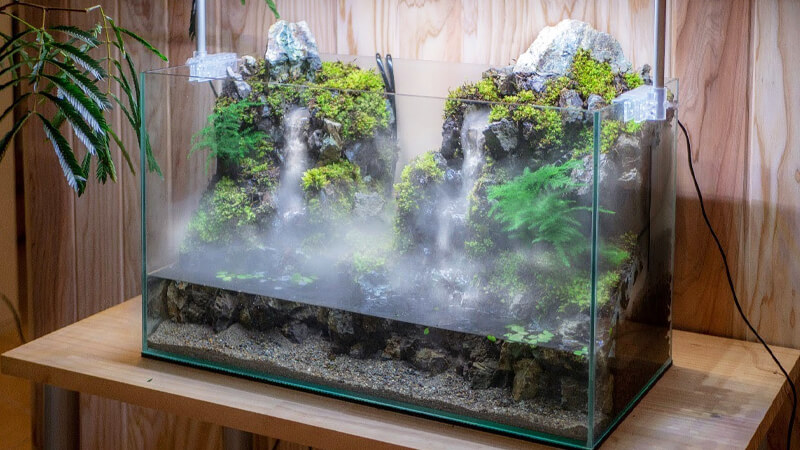 Aquaterrarium
Aquaterrarium
The Aquaterrarium features a unique combination of aquatic and terrestrial environments. This type of terrarium gained popularity among biologists and collectors who kept animals like turtles and crocodiles, which can thrive in both land and water.
Paludarium
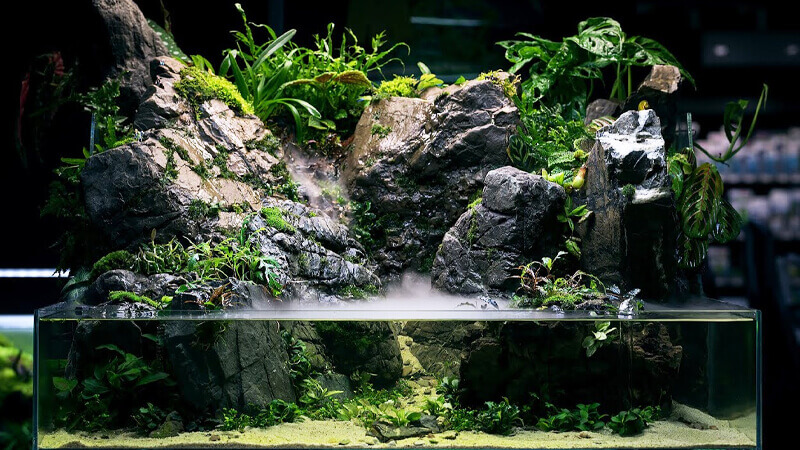 Paludarium
Paludarium
The Paludarium replicates a swamp or marshland ecosystem, characterized by semi-aquatic plants and a small body of water. It can also accommodate amphibians and insects.
Riparium
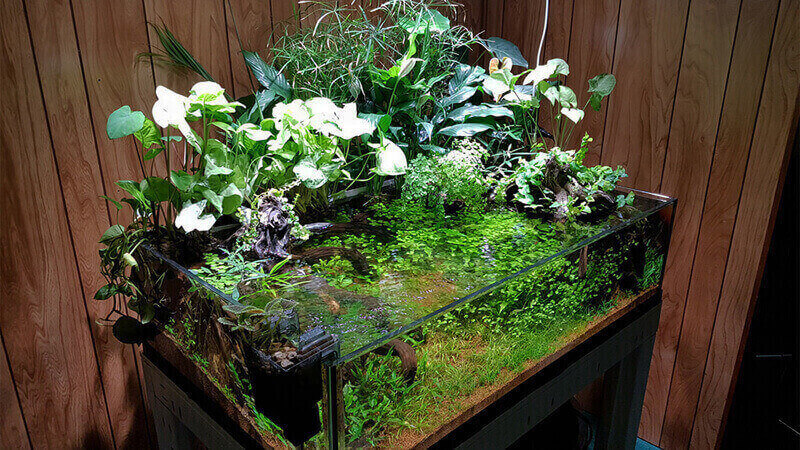 Riparium
Riparium
Derived from the Latin word “ripa,” meaning riverbank, the Riparium mimics a riverbank ecosystem. It features dense-rooted plants and a high water ratio, usually over 50%.
Rivarium
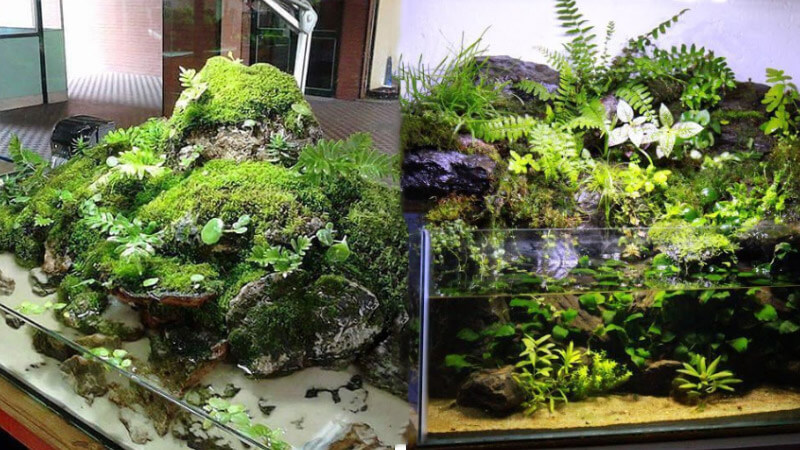 Rivarium
Rivarium
The Rivarium replicates a river or stream ecosystem with pebbles and a relatively low water level. Typical plants for this type include semi-aquatic and aquatic plants, along with aquatic animals.
Desert Terrarium
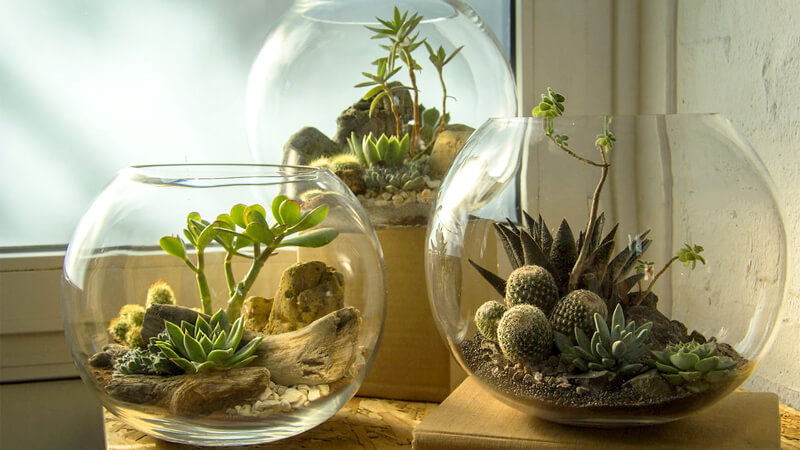 Desert Terrarium
Desert Terrarium
The Desert Terrarium mimics a desert environment with a deep layer of sand or a mixture of sand and clay. It typically features drought-tolerant plants like succulents and cacti.
Forest Terrarium
 Forest Terrarium
Forest Terrarium
The Forest Terrarium replicates a forest ecosystem or a portion of it. It is considered a transition between tropical rainforest and dry terrariums.
Rainforest Terrarium
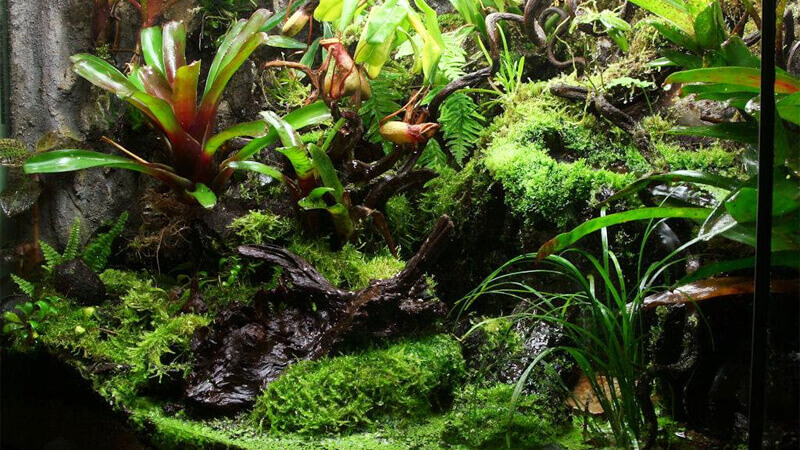 Rainforest Terrarium
Rainforest Terrarium
The Rainforest Terrarium recreates the environment of a tropical rainforest, providing a habitat for various animals and plants.
Steppe Terrarium
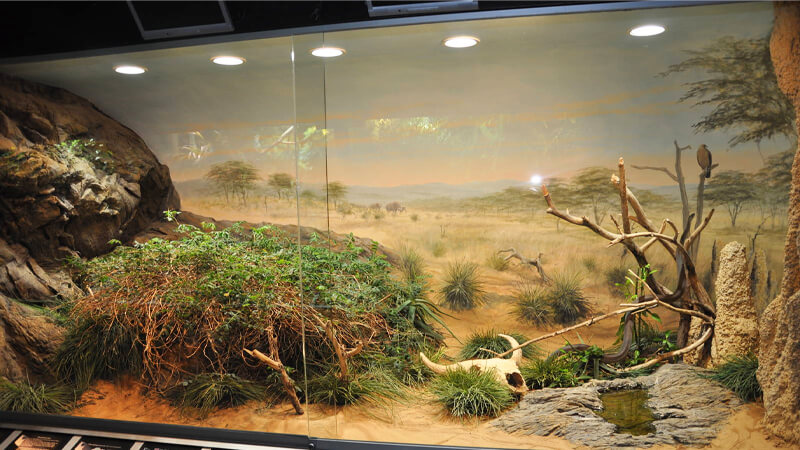 Steppe Terrarium
Steppe Terrarium
The Steppe Terrarium mimics a dry grassland ecosystem, serving as a transition between desert and savannah terrariums.
Savannah Terrarium
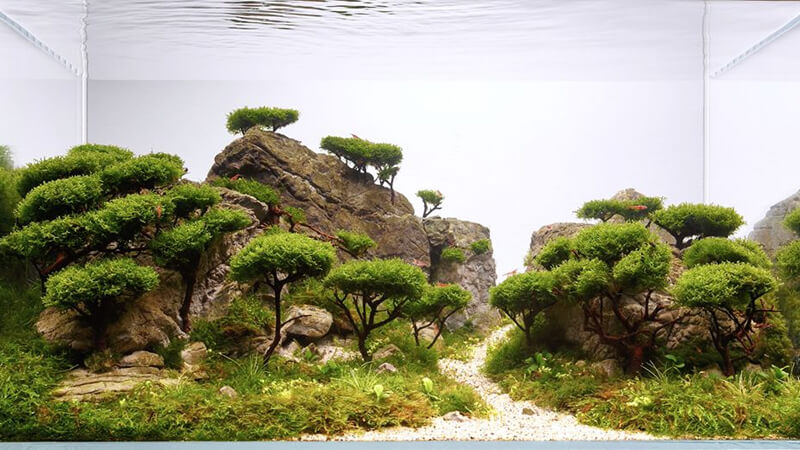 Savannah Terrarium underwater
Savannah Terrarium underwater
The Savannah Terrarium replicates a grassland ecosystem, featuring grasses, small woody shrubs, and temperate zone plants, along with stones and pebbles.
Penguinarium
 Penguinarium
Penguinarium
The Penguinarium replicates the ecosystem of the polar regions, featuring animals such as penguins, polar bears, and orcas. This type of terrarium is commonly used for exhibitions in zoos or for commercial purposes.
These are just a few examples of the diverse and captivating world of terrariums. We hope this information sparks your interest and inspires you to explore the beauty of these miniature ecosystems. Stay curious, and keep discovering!



































